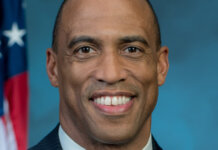The American Enterprise Institute (AEI) sponsored a seminar on Nov. 12 in Washington, D.C., entitled ‘Is it Possible to Reprivatize the U.S. Financial System?’ – and the answer to that question, it seemed, was yes and no. Yes, the panelists at the seminar believed it is crucial for the federal government to remove itself from the dominant role it now holds; however, no one quite knew when or how this could occur
For Alex J. Pollock, a resident fellow with the AEI, the federal government's role has become too much of a bad thing.
‘Mortgage funding is now being done almost wholly by the government,’ said Pollock, the seminar's moderator. ‘This includes the high intensity use of the Federal Reserve's balance sheet to finance Fannie Mae and Freddie Mac so they can buy mortgages. Of course, this brings us to the balance sheet of the Federal Reserve – most interestingly, it looks like the balance sheet of a commercial bank as opposed to a central bank.’
Pollock cited the example of Cincinattus, the ancient Roman leader who was called from his farm to provide strong leadership during a prolonged crisis, but promptly resigned and returned to his farm once he achieved his goals. Pollock compared the federal government's role in the financial services world to being something of an anti-Cincinattus – coming into a crisis, but not giving any evidence that it will be ready to depart when the crisis abates.
The other panelists on the seminar shared Pollock's concern. For Jay Brinkmann, chief economist and senior vice president of research and economics for the Mortgage Bankers Association (MBA), the federal government's dominant role in the secondary market is clear to anyone who can read.
‘How do you privatize something with 'government-sponsored' in its name?’ he asked.
Brinkmann spelled out what the MBA has proposed as a five-step plan to revitalize the government-sponsored enterprises (GSEs):
- Make sure that private capital is the first line of defense against losses, with no institution too big to fail.
- Establish an insurance fund, similar to the Federal Deposit Insurance Corp. for the banking industry, as the second line of defense.
- Establish a clear definition of what the GSEs will and will not support.
- Establish an explicit means of compensating the government for the guarantee.
- Remove all indicia of implied federal support.
The fifth proposal is key for Brinkmann, who noted that Fannie Mae and Freddie Mac had previously blurred the lines regarding their federal connections. ‘Fannie and Freddie were very adept at saying, 'No, we don't have any government support,'’ he said.
Brinkmann predicted a transition process to wean the GSEs out of conservatorship could take at least three years, requiring further legislation to their new charter. In the meanwhile, however, he acknowledges that Fannie and Freddie cannot be completely erased from the equation.
‘If we phase out the GSEs, who supports the mortgage market as we go forward?’ he said.
But does the federal government want to go forward in such a manner? Robert A. Eisenbeis, chief monetary economist at Cumberland Advisors, based in Vineland, N.J., openly questioned the lack of government specifics on when the private sector will take over the reins.
‘As a result of an ad hoc rescue solution to a short-run problem, we now have a deep-run involvement of the government in the financial system, with no end game or exit strategy in sight – or in place, to begin with,’ he said. ‘What is the new financial architecture going to look like in the broadest sense? What is the competitive structure going to be? How will institutions relate with each other in a competitive marketplace?’
Eisenbeis criticized what he dubbed the ‘printing money strategy’ by the Federal Reserve to ‘buy mortgages and launder them through Fannie and Freddie in a cooperative arrangement.’ He also bemoaned the federal investment of over $1 trillion into the GSEs via capital investments, debt holdings, and the holdings of mortgage-backed securities.
But Eisenbeis stated that three possible options regarding Fannie and Freddie's future – returning to a pre-conservator state, carving up the GSEs into separate segments or phasing them out and liquidating their assets – are all unsatisfactory, to some extent.
However, Mark Olson, co-chairman of the board of Corporate Risk Advisors, believed a solution is possible. ‘Anything with a discreet income stream can be privatized,’ he said.
Olson noted that the evaporated private-label secondary market can rebound through the efforts of a number of private capital entities that are looking for new channels to invest their funds. He predicted that housing needs, particularly for low-income Americans, will continue to be a congressionally mandated mission, thus encouraging new players to come forward for originating and securitizing home loans.
‘There are certain values and industries that Congress does, and will continue to, promote,’ he said. ‘The top of the list is housing, and it will continue to be that way.’
Yet Joshua Rosner, managing director at New York-based Graham Fisher & Co., argued that outside of the GSEs, stability cannot take place beforel the concept of too-big-to-fail is defined – or, perhaps, eliminated.
‘Too-big-to-fail is like calling in the bomb squad and having them stand around a bomb until it explodes,’ he remarked. ‘I thought the purpose of calling in the bomb squad was to have it safely dismantle or detonate the bomb as soon as possible.’











